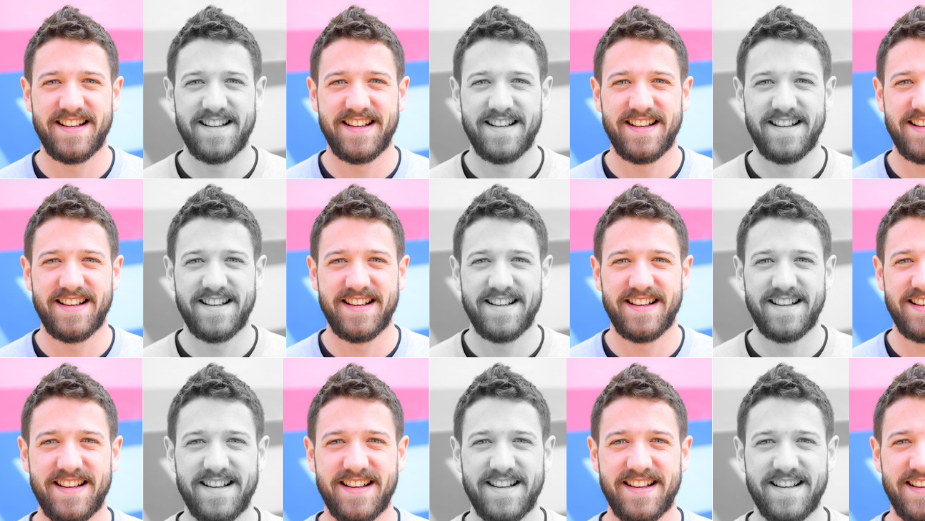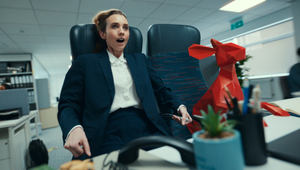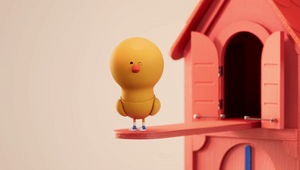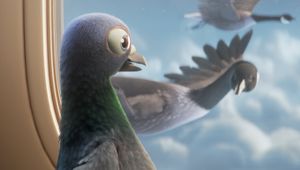
Conor Finnegan on Putting Adorable Characters through Hell

Animation director Conor Finnegan grew up in a small fishing village just outside Dublin, and was always interested in drawing and creating. His mother, always encouraging, was framing pictures drawn by him from age four until… well, probably now. “Bear in mind this was pre-Ikea frames,” he adds. “You’d have to go to a framer’s to get something framed!”
When he was eight, a teacher of his bought one of his pictures for £5, which he likes to think of as the moment that sparked the idea of turning his hobby into a career. “Not that eight-year-old me cared much about having a career.”
Still, the spark remained and guided Conor through graphic design in college (which he really didn’t love that much ever since he realised graphic designers don’t spend their life designing cool car logos or record sleeves). After the first year, he switched to film production where he learned about writing, directing, editing, sound, film history, and the whole lot.
“I loved it. But it was only a two-year course, so by the time I finished I felt like I was only getting my toes wet.” He picked up a job as a runner at a post-production house in Dublin and after making “a billion” teas and coffees for (here he hesitates) “obnoxious commercial directors,” he decided that’s not where he wants to be either.
But the spark was still there, worry not. While at the post house Conor fell in with “some animation people,” who were the friendliest bunch he could find there and would give him a behind the scenes look on their craft process.
“Animation suddenly seemed like the perfect balance of filmmaking and design. Which it is. So I decided I’d go back to college to get a degree, make the parents proud.”
Scaling Up
Conor studied animation at IADT, the National Film School of Ireland, and loved it. Finally in his lane, he learned heaps and started making films at school, a couple of which won a few prizes from festivals.
While he had made plenty of shorts at college, his first time making something “professionally” was his short film ‘Fear of Flying’. Prior to it, on his other projects, Conor always wore all the hats – he’d build stuff and light stuff and then animate it, all by himself. He hadn’t directed other people up to that stage, so when he suddenly found himself with a budget and a producer, he was totally overwhelmed.
Working with DOPs, gaffers, prop makers, set builders and puppeteers was meant to be making his job easier, but turned out to be a major learning curve. “But I’m so grateful to have been able to make that short film, because it opened the door to possibilities and projects that I hadn’t even dreamt of to that point. It brought me around the world to film festivals, I got to make a spin-off TV show for Nickelodeon based on it, and it got me signed with Nexus which led to my first real commercial job.”
To scale this, Conor mentions his biggest project so far – ‘Rock, Paper, Scissors’ for Android. “It aired during the Oscars on American TV, which was sort of mind blowing, but was also really well received, thankfully.” He says that what he really enjoyed about it was using the real world as a backdrop to stage animated puppets.
“We shot in Watford in January but through some sneaky trickery made it look like somewhere in California. It was snowing on the first day of the shoot, but we were able to add a lot to the film in post - matte paintings and sky replacements to make it feel less grim than the reality of a cold wet housing estate in North London.”
Funny Bones
Over the course of his career, Conor has realised that the more stories he gets to tell, and the more things he gets to try, the more he learns about animation. So he let himself slide down the learning curve of the industry.
“I second guess myself less because I generally know what I’m doing now and why I’m doing it. The one thing that links all my work is character, narrative and hopefully comedy.”
While he believes that puppets can convey all sorts of tonally varied performances if done correctly, Conor sees an intrinsic connection between them and comedy. “There’s something quite unique about them that makes them funny,” he says. He believes this is to be the case because of the uncertainty they bring, which is also the reason behind the “child-like giddy-ness” people get around puppets. “You just don’t know what they’re likely to do. I blame the puppeteers for being such wonderfully mad people.”
This uneasiness that comes from puppets’ random behaviours often makes dialogue obsolete, which is also evident from Conor’s work. “Often the comedy comes from the circumstances you find these characters in. It’s quite fun to take a character and put them in a dark place, where they might feel threatened or challenged. I think there’s a level of ‘schadenfreude’ about it – a weird fun and thrill in watching a character struggle or even suffer within a narrative.”
Believe it or not, Conor says that he thinks the ‘schadenfreude’ is even more heightened when it’s a puppet or a cute stop-motion creature. “They just become even more endearing and relatable.”
This tendency for putting characters in difficult situations is also what helps Conor balance out narrative and character design to achieve the perfect comedy. “Having a likeable character and putting them through their paces physically or emotionally is always going to be funny. Even just seeing a character struggle with the normal, mundane, boring tasks that we humans struggle with too can be hilarious.”
But besides putting cute characters through the ringer, relatability also comes from certain animated traits. For Conor, the magic is always in the eyes. “They can be big eyes or small eyes, but the character’s eyes – much like a human’s – are windows into their souls. If they had souls. Which maybe they do, sort of…
“But yeah, I think you can stick some eyes on pretty much anything and it will give a sense of ‘being’ and ‘character’.
A character’s demeanour will also vary depending on the eye placement. It’s because eyes are the first thing we look at when we speak to another human, so when you look at something else with eyes you automatically start trying to read it, looking for small cues or hints to its emotional state. I love it. Eyes on everything!”
When it comes to different media, Conor admits to loving all kinds, but if he had to choose only one he always comes back to stop-motion. The small details and “devastatingly painstaking and time consuming artistry” is still fascinating to him.
“Stop-motion is basically magic in the real world. Creating miniature universes and breathing life into inanimate objects. It’s insane.”
It’s the grit of stop-motion that attracts Conor, and how adjacent it is to real life. This is probably the reason why he wasn’t into Disney characters, which as an animator studying animation at college was “almost unheard of.”
He says: “Everyone loved the way these characters moved and how their hair animated, but that stuff never really did anything for me. I think I’m probably more inspired by certain styles within illustration and design.”
Recent Flights of Fancy
Lately, work is still as exciting for Conor as ever. His work with Progressive Insurance and Arnold explored the concept of two pigeons who hang out in the park, discussing how they’d spend the savings one can get if they insure with Progressive.
“There’s something nice about the everyday-ness of the park scenario and then the talking pigeons bring a level of unexpectedness.” Chuck, one of them is a daydreamer, while Gina is more of a realist.
So, while he dreams big and has literal flights of fancy, she’s there to “cut him down to size and bring him back to reality – eating stale bread from a path in the park.” For Conor, the voice actors on the project carried the performance of the characters, which allowed for a good amount of nice, well-timed funny moments.

“I designed Chuck to be slightly more upright and man-like than Gina,” explains Conor. “This was to humanise him a bit more, afterall he probably dreams and conspires to be a human some day, while Gina is more comfortable and proud to be a pigeon. It was a lot of fun delving into their stories.”

Another piece of genius character work was Conor's ad for MakerPlace by Michaels – a website that centres around crafts that makers make at home and sell online. So, the concept was quite simple – all the crafts come to life and sing the song ‘RESPECT’.
“The part of this project I enjoyed the most was finding crafts that could conceivably sing,” says Conor. “There’s the slightly obvious ones like the painted dog on a plate where the dog sings, but there are less obvious ones like the leather bag coming to life or the stool cushion becoming a mouth.”

Above: The process of creating the singing earrings
What he enjoyed most was finding ways to bring together a crafter cast of characters in unique ways in a very practical sense. “We shot most of the sequences as live action puppetry – everything in camera – while one was animated as stop-motion, and then one or two sequences had some mouths added in post.”

Above: Filming the singing bag
Looking ahead, Conor hopes, as always, to be making more character-filled work where he gets to put cute and adorable creatures through the mill of life, much to the delight of audiences. “I’m also working toward making my first feature film,” he shares.
“And, I’ve been awarded script development funding for a second feature film project with Screen Ireland. Both films are stop-motion, hence due for release in the year 2057 approximately.” Don’t worry, they’ll be worth the wait.















